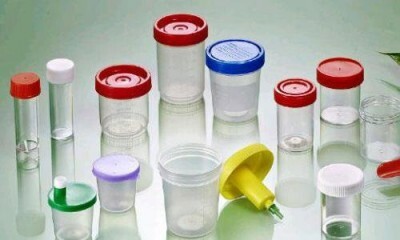1 Medical indications
Dysbacteriosis of the intestine occurs in humans due to imbalance of microflora in the intestine. Under certain circumstances, the number of beneficial bacteria is reduced, and pathogenic microorganisms begin to multiply actively.
Do you have gastritis?
GALINA SAVINA: "How easy is it to cure gastritis at home for 1 month. A proven method - write down a recipe. ..!"Read more & gt; & gt;
Anaerobic bacteria( bacteroids, enterococci, bifidobacteria, clostridia, eubacteria) and aerobic bacteria( enterobacteria, streptococci, lactobacilli, staphylococcus, fungi) live in the rectum. Under normal conditions they promote digestion, supporting local immunity.
With dysbacteriosis, there are no specific symptoms. It can manifest in the same way as other diseases of the digestive tract. For the diagnosis of bacteriosis, it is necessary to find out where to pass the analysis of feces for dysbiosis, how to do it correctly, what studies exist. As a result of imbalance, the following symptoms may occur:
- diarrhea;
- constipation;
- bloating, flatulence;
- acute paroxysmal pain in the abdomen;
- allergy;
- gum bleeding;
- residues of undigested food and mucus in stool;
- skin peeling;
- brittleness of hair and nails;
- white coating on the tongue;
- dark plaque on the teeth;
- appetite impairment;
- bad breath;
- a general decrease in immunity.
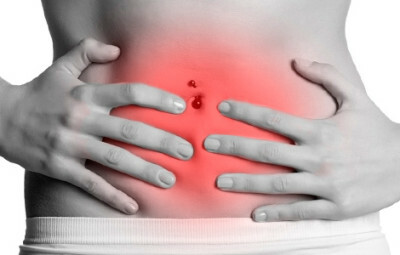
Recommended to read
- Preparations for intestinal dysbiosis
- What should be done with food poisoning?
- What pills and folk remedies will help to get rid of nausea during pregnancy
- Effective remedy for gastritis and stomach ulcer
If you have the above symptoms, it is recommended to consult a doctor. He will tell you how to collect the feces. There are certain protective mechanisms that prevent the spread of upstream gastrointestinal tract bacteria and fungi that inhabit the intestine. The following factors prevent the spread of microorganisms in the small intestine:
- production of hydrochloric acid, which is harmful to some species;
- pleoecal valve allows you to move from top to bottom, blocking the way from the bottom up;
- smooth muscles ensure the constant advancement of substances from the small intestine to the thick.
Disease-causing bacteria can cause severe gastrointestinal diseases( salmonella and shingella). To determine the cause of the disease, it is necessary to conduct an analysis of feces for dysbiosis. This study is prescribed with prolonged use of antibiotics, which disrupt the microflora in the body. Analyzes for dysbiosis make it possible to isolate strains of microorganisms and determine their number. The doctor can prescribe bacteriological and biochemical analysis of feces for dysbacteriosis, or scoproscopy.
-
 IMPORTANT TO KNOW! Gastritis? Ulcer? To have a stomach ulcer not turned into cancer, drink a glass. ..Read the article & gt; & gt;
IMPORTANT TO KNOW! Gastritis? Ulcer? To have a stomach ulcer not turned into cancer, drink a glass. ..Read the article & gt; & gt;
2 Methods of investigation
Bacterial culture of the stool is performed with the help of a catalyst. Within 4-5 days, the bacteria multiply. During this period, they are examined under a microscope, counting for 1 g of the diagnosed material. The results of stool analysis for dysbacteriosis are expressed in CFU / g. The unit of measurement is deciphered as an indicator of colony forming units per 1 g of starting material.
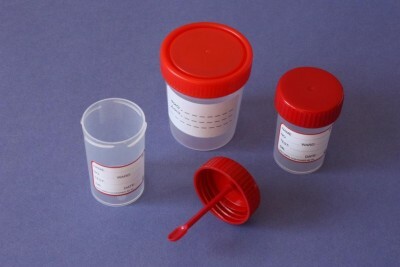
To obtain a reliable result of bacteriological analysis for dysbiosis, the following rules should be adhered to when collecting stool:
- 3 days before the study, it is necessary to exclude from the diet dishes from fish, meat and alcohol( they provoke the processes of fermentation in the intestine);
- do not take medications( antibiotics, rectal suppositories, laxatives, vaseline or castor oil) within 3 days before the analysis;
- before passing the test for dysbiosis it is necessary to wash the perineum;
- feces should be obtained naturally, without enema;
- it is necessary to make sure that urine is not contained in the stool;
- material is collected in a sterile container;
- for accurate results defecation is recommended for hot film or sterile vessel;
- if sowing feces on a dysbacteriosis contains blood or mucus, then they are necessarily given for examination;
- sample volume should be about 10 g( 1 tablespoon);
- , the time from collection of the test material to delivery to the laboratory should not exceed 2 hours( the faster the sample is delivered, the more accurate the result);
- in the refrigerator sample can be stored for up to 4 hours;
- do not freeze the material.
-
 Gastroenterologist. IMPORTANT: "I beg you, if you began to worry about abdominal pain, heartburn, nausea, do not in any way do gases. .."Read more & gt; & gt;
Gastroenterologist. IMPORTANT: "I beg you, if you began to worry about abdominal pain, heartburn, nausea, do not in any way do gases. .."Read more & gt; & gt;
Anaerobic bacteria( which in the intestine most) die on contact with oxygen. To collect feces for analysis in a child, the baby must first urinate. Before you pass the test for dysbiosis, it is recommended to wash the pot. The urine should not fall into the bowel movement. In a sterile container it is necessary to collect about 10 g of feces for the sample. It is recommended to take fresh material.
There are certain norms of different bacteria in the human body. Scientists have derived the most favorable ratio of microorganisms in the intestine. The stool analysis shows:
- of clostridium - 103-105 cfu / g;
- streptococci - 105-107 cfu / g;
- coagulase-negative, non-hemolytic staphylococci - 104-105 CFU / g;
- plasmacoagulant, hemolytic staphylococci - <103 CFU / g;
- of an escherichia - 106-108 CFU / g;
- peptostreptococci and peptococci - 105-106 cfu / g;
- bacteroides - 107-109 CFU / g;
- lactobacilli - 106-109 cfu / g;
- bifidobacteria - 108-110 CFU / g;
- gram-negative non-fermenting sticks, conditionally pathogenic enterobacteria - 103-104 cfu / g.
ADVICE FROM THE MAIN GASTROENTEROLOGIST
Korotov SV: "I can recommend only one remedy for the rapid treatment of Ulcer and Gastritis, which is now recommended by the Ministry of Health. .." Read testimonials & gt; & gt;
3 Recommendations of doctors
Bacteriological analysis allows you to examine the contents of the intestines by determining the bacteria living in it. This study has the following drawbacks:
- anaerobic bacteria die on contact with oxygen, which greatly distorts the accuracy of the results;
- does not take into account mucosal bacteria living on the mucosa of the large intestine( they do not enter the stool);
- anaerobic bacteria quickly die in the oxygen environment, and their number is more difficult to calculate.

Biochemical tests for dysbacteriosis are performed faster than bacteriological culture. Bacteria in the process of their life emit fatty acids. The interpretation of the result of the analysis allows us to identify the spectrum of these fatty acids, the work of bacteria and the part of the intestine where the failure occurred. Such a method has several advantages:
- the speed of obtaining the result( after 1 hour);
- examined the cavitary and mucosal flora;
- accurate data;
- time from collection of material for analysis to the study itself can be extended( you can pass the feces for analysis the next day or freeze);
- preparation for the analysis does not require additional procedures.
It is advisable to ask the doctor how to properly collect the feces for biochemical analysis:
- discard laxatives 3-4 days before collection;
- after a course of antibiotics must pass a minimum of 10-14 days;
- does not use an enema to collect material;
- uses special disposable containers for collection and storage, which are sold in pharmacies;
- feces should be free of inclusions of urine and discharge in women;
- should be collected from different parts of the stool;The
- sample is delivered to the laboratory for 3 hours or frozen for delivery the next day.
In the biochemical analysis, the content of acids( the products of the vital activity of bacteria) is determined. Acceptable values of absolute content in mg / g:
- acetic acid( C₂) - 5.35-6.41 mg / g;
- propylene acid( C₃) - 1.63-1.95 mg / g;
- Butyric acid( С₄) - 1,6-1,9 mg / g.
Based on laboratory tests, the concentration of fatty acids is deduced. This result is correlated with certain pathologies of the gastrointestinal tract. What shows the analysis of feces, you need to know the doctor. Based on the data received, appropriate treatment is prescribed. If necessary, you need to re-pass the test for dysbiosis.
4 Intestinal microorganisms
It is possible to suspect dysbacteriosis in the patient of a dysbacteriosis( a procedure for studying stool masses through a microscope).With the help of this method, it is possible to detect color dysfunction, the presence of impurities( in the form of mucus, blood, parasites) and undigested food residues. This method of diagnosis does not give an accurate result about the patient's dysbiosis, but it can push the doctor to suspect it. If necessary, further bacteriological or chemical analysis of feces for dysbiosis.
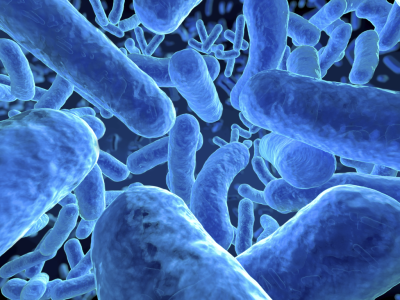
About 95% of the total mass of microorganisms in the intestine is bifidobacteria. They help synthesize B vitamins, vitamin K, improve the absorption of vitamin D, amino acids, proteins, vikasol, nicotinic and folic acid. Some scientists believe that part of bifidobacteria secretes specific substances that interfere with the development of bowel cancer.
Another important property of these bacteria is the ability to lower serum cholesterol level, normalizing the level of lipoproteins and phospholipids. Lactobacilli constitute 4-6% of the total mass of all bacteria in the intestine. They contribute to the timely defecation of the body, preventing constipation and allergic reactions. They maintain an acid-base balance in the intestines, carrying out a protective function. Lactobacilli produce the following substances:
- lactic and acetic acids;
- acidophilus;
- lactocidin;
- hydrogen peroxide.
These substances prevent active propagation of pathogenic microorganisms. Intestinal sticks and enterococci are classified as a neutral microflora. Scientists have not proven their beneficial effects on the body. Some types of rods and cocci are considered opportunistic. They can cause harm to health only under certain conditions, if their number exceeds the permissible value. With the normal functioning of the body, they are completely harmless.
5 Bacteroides and fungi Candida
Escherichia are microorganisms that inhabit the intestines from birth. They participate in the production of B vitamins, vitamin K, a natural antibiotic( colicin).Colicin supports the protective functions of the body, suppressing the growth of pathogenic microorganisms. Escherichia participate in the assimilation of sugars.
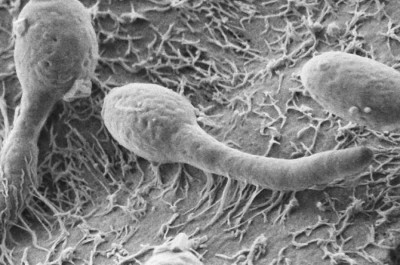
Bacteroids appear in the human body from the 7th to 9th month of life, when the baby's diet changes( during this period, the baby is usually started to feed).This is due to their immediate function of digesting fats. The amount of bacteroids can vary depending on the amount of fatty foods consumed.
Clostridium synthesizes indole and skatole as a result of protein processing. In small amounts, these substances improve intestinal motility, but in large quantities they are toxic and provoke putrefaction depression.
Yeast-like fungi of the genus Candida are present in the norm in the intestine. They are related to opportunistic microorganisms. If their number exceeds the norm, then they diagnose candidomycosis sepsis or candidomycosis. Changes in the intestinal microflora may be influenced by the following factors:
- antibiotic use;
- eating large amounts of carbohydrates, sugar;
- frequent stress;
- chronic infectious diseases;
- diarrhea;
- toxins, the composition of household chemicals;
- presence of helminths;
- food allergy;
- change of climatic zone;
- intestinal infections;
- power failure.
Many microorganisms settle in the intestines, because there is a favorable environment for them( heat, humidity, food).In order not to pass the analysis on intestinal dysbacteriosis, it is recommended to observe the following rules:
- food intake should be divided into 4-5 small portions throughout the day;
- daily eat fresh vegetables, fruits and greens;
- daily use of sour-milk products( they are rich in living bacteria);
- to consume foods rich in fiber;
- drink daily 1.5-2 liters of water;
- minimize the use of sugar.
Prevention of dysbiosis is a complete rest and a 7-8-hour sleep.
- 1 Medical indications
- 2 Methods of research
- 3 Recommendations of physicians
- 4 Intestinal microorganisms
- 5 Bacteroides and fungi Candida
The analysis of feces for dysbacteriosis is recommended to be taken to the doctor's prescription. In the human GIT, there are various strains of bacteria. They harmoniously co-exist and control the number of each other. Among them there are useful microbes, harmful and conditionally pathogenic bacteria. The intestine contains approximately 100x1012 microorganisms, about 500 different species.



